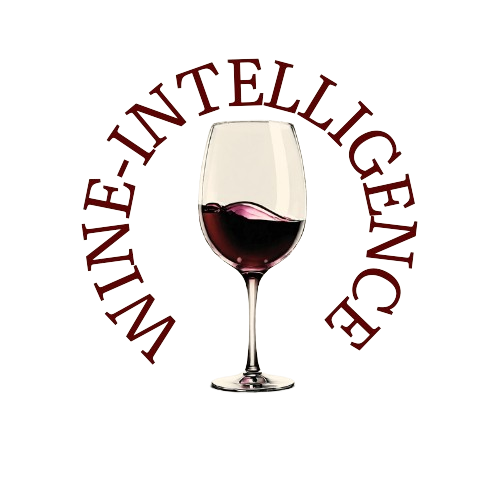Wine appreciation is a deeply subjective experience. Taste preferences, individual sensitivities, and cultural influences make wine an intensely personal subject.
Even professional tasters often disagree on what a wine tastes like, so how can platforms like Wine-Searcher confidently present a list of the world's best wines?
As with many things, the answer is: it’s complicated.
A Data-Driven Approach
Wine-Searcher’s "best wines" lists are not arbitrary declarations of personal preference. Instead, these rankings are rooted in data. The platform compiles and analyzes scores from a broad spectrum of critics to minimize subjectivity and offer a well-rounded perspective.
The critics contributing to these scores represent some of the most authoritative voices in the wine world. Heavyweights such as Wine Advocate, Decanter, Jancis Robinson, and Jane Anson are joined by specialists like La Revue du Vin de France, Jasper Morris, and Patricio Tapia. This diverse range of opinions ensures that the scores reflect a broad consensus rather than a single critic's taste.
Addressing Producer Concerns
Despite this rigorous methodology, Wine-Searcher frequently fields complaints from producers questioning their scores. For example, a producer might wonder why their wine scored 93 when a local reviewer awarded it 96. The answer lies in the depth and breadth of Wine-Searcher’s scoring system. A single exceptional review cannot disproportionately influence the overall score, ensuring a fair representation based on multiple evaluations.
This approach benefits consumers by providing a reliable snapshot of how a wine is regarded by a cross-section of critics. While no scoring system is perfect, Wine-Searcher’s model aims to balance professional opinions with crowd-sourced insights from platforms like CellarTracker. Interestingly, comparisons between major critics and crowd-sourced reviews reveal consistent patterns, lending credibility to the aggregated scores.
The Annual Debate
Every year, Wine-Searcher’s "best wines" lists ignite spirited debates among wine enthusiasts. Passionate feedback—sometimes vitriolic—from readers underscores the intense emotions that wine evokes. However, these discussions also highlight the universal appeal of wine and its ability to spark conversation and connection.
The Top Wines of 2024 by Wine-Searcher
For 2024, Burgundy once again dominates the list, solidifying its reputation as a favorite among critics. Here are the top 10 wines:
- Domaine de la Romanée-Conti Romanée-Conti Grand Cru (Côte de Nuits, France) - EUR 22,230 (98/100)
- Leroy Chambertin Grand Cru (Côte de Nuits, France) - EUR 12,694 (98/100)
- Leroy Musigny Grand Cru (Côte de Nuits, France) - EUR 36,269 (98/100)
- Leroy Romanée-Saint-Vivant Grand Cru (Côte de Nuits, France) - EUR 8,665 (98/100)
- Leroy Domaine d’Auvenay Chevalier-Montrachet Grand Cru (Côte de Beaune, France) - EUR 22,371 (98/100)
- Domaine de la Romanée-Conti La Tâche Grand Cru Monopole (Côte de Nuits, France) - EUR 6,051 (97/100)
- Leroy Latricières-Chambertin Grand Cru (Côte de Nuits, France) - EUR 5,850 (97/100)
- Coche-Dury Corton-Charlemagne Grand Cru (Côte de Beaune, France) - EUR 5,871 (97/100)
- Quinta do Noval Nacional Vintage Port (Portugal) - EUR 1,161 (97/100)
- Realm Cellars The Absurd Proprietary Red (Napa Valley, USA) - EUR 1,230 (97/100)
Trends and Observations
Burgundy’s dominance is evident, with eight of the top 10 wines hailing from the region. The exceptional performance of Leroy wines is particularly noteworthy, showcasing their consistent appeal to critics.
This year also highlights price reductions for several top wines. For example, Domaine de la Romanée-Conti Romanée-Conti Grand Cru saw its global average retail price drop by EUR 2,500, while Leroy Chambertin Grand Cru’s price decreased by a staggering EUR 11,140.
Final Thoughts
While the methodology behind Wine-Searcher’s rankings may not satisfy every critic or producer, it represents one of the most comprehensive systems currently available. These lists are not just about rankings; they celebrate the diversity and excellence within the wine world, sparking debates and fostering appreciation among enthusiasts.
As the 2024 rankings demonstrate, the "best wines" are as much about quality as they are about legacy, consistency, and the ability to captivate critics and consumers alike. Cheers to another year of spirited discussions and exceptional wines!
Source: Wine-Searcher

